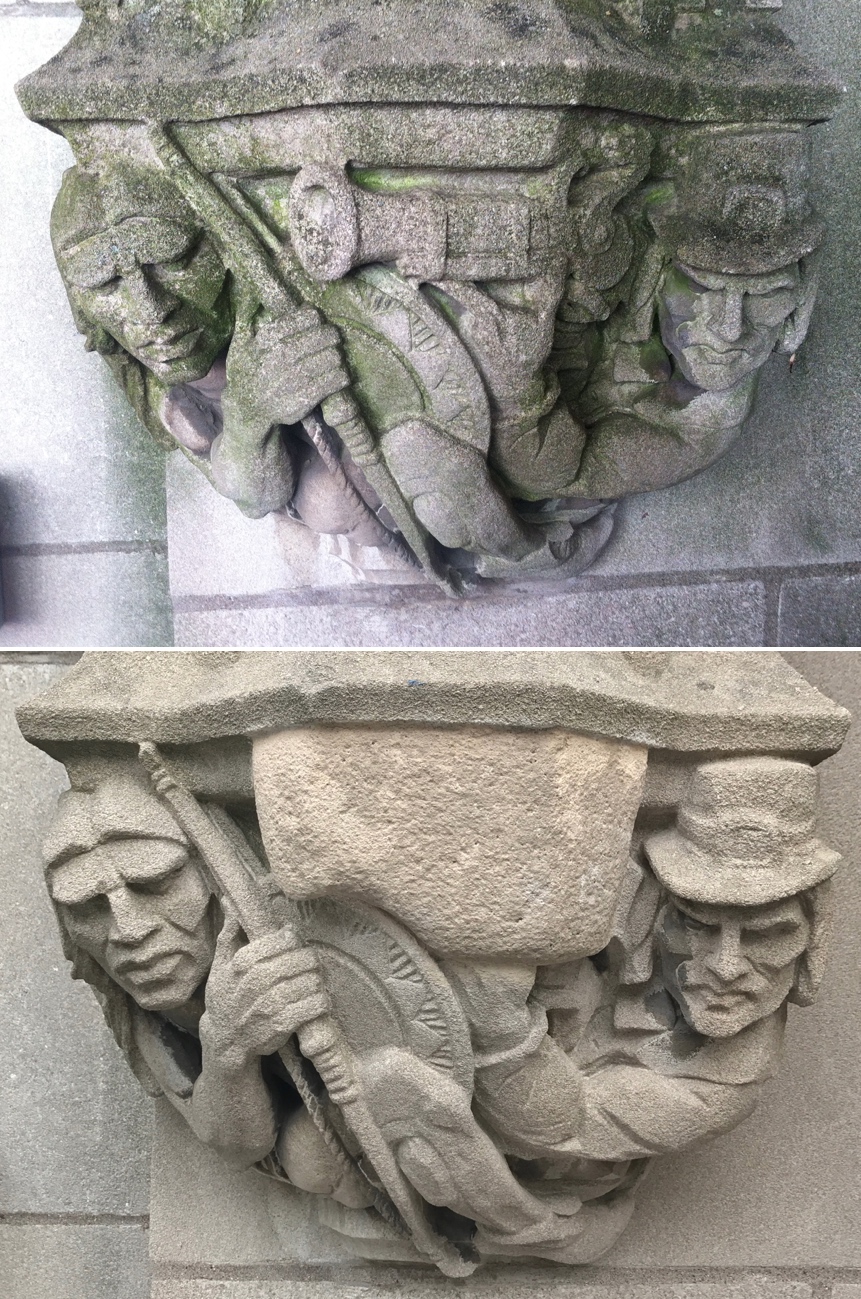
As institutions across the United States re-evaluate images of America’s shameful history, Yale officials have covered part of a stone carving depicting a Puritan and a Native American outside its own Sterling Memorial Library. The alteration, made in 2016, is gaining attention in the wake of recent violence in Charlottesville and a national debate over Confederate monuments in the US.
The sculpture, which shows a Puritan man pointing a musket at a Native American man, was partially cemented over with a layer of stone that hides the gun, according to a short August 9 post on Yale Alumni Magazine, written by alumnus Mark Alden Branch.
“If you were especially observant during your years on campus,” Branch wrote, “you may have noticed a stone carving by the York Street entrance to Sterling Memorial Library that depict[s] a hostile encounter: a Puritan pointing a musket at a Native American,”
Sterling Memorial Library at Yale. Courtesy Kelly McCarthy via Flickr.
According to Branch’s post, the library decided to reopen the long-disused entrance as the front door of its new Center for Teaching and Learning, launched in 2014. But head librarian Susan Gibbons and the university’s more recently formed Committee on Art in Public Spaces decided the carving’s “presence at a major entrance to Sterling was not appropriate.” The layer of stone covering the Puritan’s musket can be removed in the future without damaging the original carving, Gibbons reportedly told Branch.
Branch and Gibbons did not respond to requests for comment for this story.
In an email statement to artnet News, Yale University President Peter Salovey echoed Branch’s account, acknowledging that the carving was altered to accommodate the new library entrance. “In 2016, as part of a project to convert a little-used doorway into a new main entrance to Sterling Library, a decision was made to partially cover with removable stonework the depiction, carved over the doorway, of a musket held by a Puritan next to a Native American,” he wrote.
Salovey went on to point out that altering campus artwork runs counter to a new policy the university adopted sometime after the stone carving was covered. “Consistent with principles subsequently adopted by the university and now in place, Yale’s policy is not to make alterations to works of art on its campus,” he said in the statement.
Salovey added that the university plans to “recognize the original carving” in the future. When asked how the school intends to acknowledge the original work—and whether it will involve relocation—a representative for Salovey said in an email that those plans have “yet to be determined.”
This is not the first time Yale has been embroiled in a controversy over campus art. Last summer, as reported by artnet News, an employee at Yale smashed a window that he described as “a racist, very degrading” stained-glass panel in the college named after Yale alumnus John C. Calhoun, a former US vice president who advocated for the protection of slave plantations in the antebellum South. The panel, which was located in the building’s dining hall, depicted two African-American figures carrying baskets of cotton on their heads.
Several months before the incident, Salovey initiated the Committee on Art in Public Spaces to survey the public art on campus. As a result, a number of stained-glass windows were already scheduled to be removed from Calhoun College and conserved for study and display.
The Committee offers an online form where Yale community members can express their views about public art on the campus.
Update, 8/22: In a statement emailed to artnet News on Tuesday, Yale’s president, Peter Salovey, announced plans to restore the original stone sculpture and remove it from Sterling Memorial Library’s main entrance. The cement that covers the musket stonework will be removed, and the sculpture will be relocated and “made available for study and viewing, and written material will accompany it and place it in historical context,” according to the statement.
Salovey did not indicate where the sculpture will be placed, but he explained the decision to restore and remove the carving this way:
We cannot make alterations to works of art on our campus. Such alteration represents an erasure of history, which is entirely inappropriate at a university. We are obligated to allow students and others to view such images, even when they are offensive, and to study and learn from them. In carrying out this obligation, we also have a responsibility to provide information that helps all viewers understand the meaning of the image. We do so in a setting that clearly communicates that the content of the image is not being honored or even taken lightly but, rather, is deserving of thoughtful consideration and reflection.